About Chris Brush Drums
About Chris, the Remote Drum Session Process, the Studio, the Clients
About Chris Brush
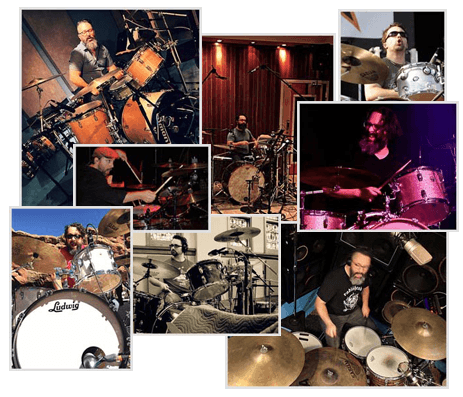
I moved to Nashville in the fall of 1999 after finishing college. I knew I wanted to play drums professionally, but didn’t know how to make that happen. I was a decidedly slow networker at first and it took a year-and-a-half after some false starts to land a minor touring gig. From there things led to other work — mostly live with a handful of recording and session opportunities. The session opportunities ignited a passion in me and I began to work toward getting off the road full time and moving into the studio scene.
All through the first decade of the ’00s, recording budgets shrunk and increasingly more overdub work was done in smaller or even home facilities. Seeing the writing on the wall, I saw that my definition of a successful career needed to shift from union scale master sessions with cartage shipping and setting up my gear to being capable of recording commercial studio quality drum tracks on my own without the overhead of a traditional studio. Enter my (and most other session players) quest to build a formidable home studio setup and advertise my availability locally and online for remote drumming sessions.
Along the way I discovered that engineering, mixing, and music production were as exciting to me as drumming. I poured effort into learning about the world of acoustics, microphones, preamps, compressors, equalizers, DAWs, mixing, engineering, etc. I began mixing my own projects and that turned into mixing and recording other artists — all the while playing drums live, in my home studio, and at studios around Nashville.
Around the back half of 2008, the time had come to take the next step so a business partner and I pooled our gear (me: mostly a ton of drums, some choice mics, and a few nice outboard pieces, him: just about everything else) and built a 3 room private recording facility where I could hang my hat, grow, experiment, play, and create. We dubbed it PlethoraTone and opened the doors in 2014.
After eight years at PlethoraTone, I was thrilled to move into a studio I designed and built. I moved in at the tail end of fall 2022 after a year of planning and construction. On any given day, I’m either out and about Nashville playing on sessions or working out of my place recording, producing, or mixing.
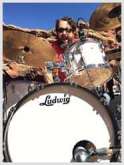
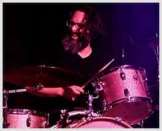
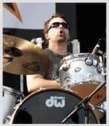

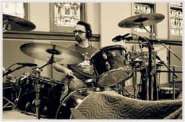
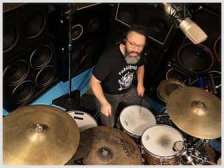
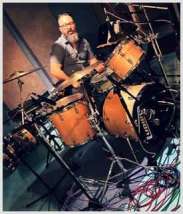
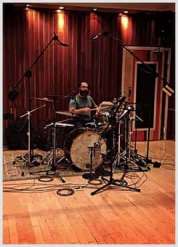
I moved to Nashville in the fall of 1999 after finishing college. I knew I wanted to play drums professionally, but didn’t know how to make that happen. I was a decidedly slow networker at first and it took a year-and-a-half after some false starts to land a minor touring gig. From there things led to other work — mostly live with a handful of recording and session opportunities. The session opportunities ignited a passion in me and I began to work toward getting off the road full time and moving into the studio scene.
All through the first decade of the ’00s, recording budgets shrunk and increasingly more overdub work was done in smaller or even home facilities. Seeing the writing on the wall, I saw that my definition of a successful career needed to shift from union scale master sessions with cartage shipping and setting up my gear to being capable of recording commercial studio quality drum tracks on my own without the overhead of a traditional studio. Enter my (and most other session players) quest to build a formidable home studio setup and advertise my availability locally and online for remote drum sessions.
Along the way I discovered that engineering, mixing, and music production were as exciting to me as drumming. I poured effort into learning about the world of acoustics, microphones, preamps, compressors, equalizers, DAWs, mixing, engineering, etc. I began mixing my own projects and that turned into mixing and recording other artists — all the while playing drums live, in my home studio, and at studios around Nashville.
Around the back half of 2008, the time had come to take the next step so a business partner and I pooled our gear (me: mostly a ton of drums, some choice mics, and a few nice outboard pieces, him: just about everything else) and built a 3 room private recording facility where I could hang my hat, grow, experiment, play, and create. We dubbed it PlethoraTone and opened the doors in 2014.
After eight years at PlethoraTone, I was thrilled to move into a studio I designed and built. I moved in at the tail end of fall 2022 after a year of planning and construction. On any given day, I’m either out and about Nashville playing on sessions or working out of my place recording, producing, or mixing.
What Would You Like to Know More About?
About the Online Drum Session Process
Recording drums via online drum tracking is definitely different than traditional in-person recording sessions where the players and producer/artist can dialogue back and forth as parts come together. However, Chris makes it easy with clear, professional communication both before and after the recording session to ensure clients get exactly what they want.
Chris’ extensive experience with remote drum sessions led him to develop project pricing tiers, service add-ons, and a five step process that ensures clients get top quality custom drum tracks no matter what the project.
Check out the pricing options and choose the remote drum session package and any Session Add-Ons that work best for your needs. Reach out to Chris if you have ANY questions and he will be sure to steer you in the right direction.
Once you select your online drum tracking package and add-ons, it’s time to send files to Chris. Stereo WAV file stems consolidated from measure one, beat one of your DAW session work best. Clients should send:
- one stem of all vocals
- one stem of all instruments
- one stem of any and all guide drums/programming/loops (if they exist)
If you have any performance notes or reference tracks, feel free to send those along with the song stems.
Zip the files for each song together and name the zip file with the song’s title, tempo, and sample rate (i.e. ‘Killer Song Title – 78bpm – 48k’). If you have tempo changes throughout, include a MIDI export of the tempo map (Chris is happy to help with this). Send the zipped song stems through whatever file transfer service you choose (Dropbox, Google Drive, WeTransfer, etc.).
If you have any questions about file preparation, feel free to reach out and Chris will be happy to assist.
Chris sets up your files in a Pro Tools session and lays in markers and charts the song. If he has any additional questions to ensure you’re both on the same page creatively, he will ask to chat before recording.
Chris works your song(s) into his remote drum session schedule and tracks everything per request.
Once Chris has yours files exported and ready, he will invoice via Venmo or PayPal (unless other arrangements are made). Please note, PayPal adds a small fee for processing. Upon payment of the invoice, Chris will release the multi-tracks via Dropbox link.
For first time clients, Chris is happy to bounce simple MP3 roughs of the drum takes against the scratch tracks so you can trust the process. Just make sure to ask for roughs.
After payment, you will get a link to download your custom drum tracks. Your zipped song files will contain:
- consolidated WAV files for each microphone divided into well-labeled take folders (stereo files are interleaved)
- separate files and folders for any applicable add-ons you selected (percussion overdubs, loop programming, etc.)
- at least one screenshot showing panning and volume from Chris’ listen back mix during tracking in case you need a starting point for your drum mix
About the Studio and Drums
The Studio
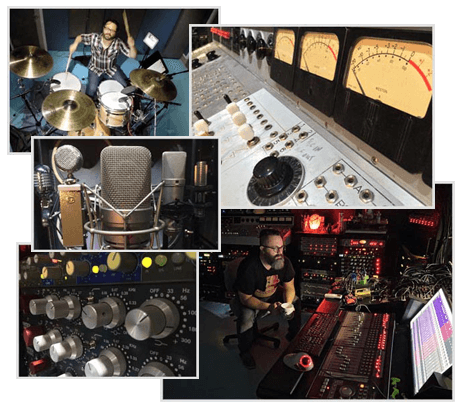
Chris records his remote drum tracks in Nashville, TN at his personal studio. Chris painstakingly designed and built his two-room sonic playground to be a comfortable, vibey place to work.
His studio features precisely measured and designed acoustic properties in both its tracking and control rooms. The tracking room offers moveable absorptive and reflective panels that additionally allows for tuning the “liveness” of the room to the project at hand. There is plenty of I/O to support Chris’ “overcapture” remote drum session mic techniques that provide clients with a ton of sonic options. Chris is able to utilize all of this to bring top-notch sounds to all online drum sessions. Check out the video below to learn more about the space.
What gear does Chris use to record drums? There’s classic gear like pres, eqs, and compressors from Vintech, Valley People Dynamite, Lexicon, and more. There are a host of mics from companies like AEA, sE, Sennheiser, Royer, and Shure. Then there are the toys Chris custom built on his soldering bench like CAPI pres, Langevin 1960s AM16 clones, parallel distortion modules, and several classic Neumann clone mics.
Chris records his remote drum tracks in Nashville, TN at his personal studio. Chris painstakingly designed and built his two-room sonic playground to be a comfortable, vibey place to work.
His studio features precisely measured and designed acoustic properties in both its tracking and control rooms. The tracking room offers moveable absorptive and reflective panels that additionally allows for tuning the “liveness” of the room to the project at hand. There is plenty of I/O to support Chris’ “overcapture” remote drum session mic techniques that provide clients with a ton of sonic options. Chris is able to utilize all of this to bring top-notch sounds to all online drum sessions. Check out the video below to learn more about the space.
What gear does Chris use to record drums? There’s classic gear like pres, eqs, and compressors from Vintech, Valley People Dynamite, Lexicon, and more. There are a host of mics from companies like AEA, sE, Sennheiser, Royer, and Shure. Then there are the toys Chris custom built on his soldering bench like CAPI pres, Langevin 1960s AM16 clones, parallel distortion modules, and several classic Neumann clone mics.
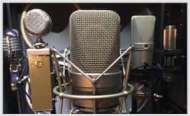
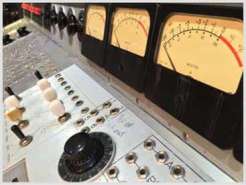
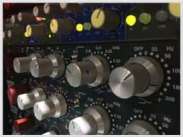
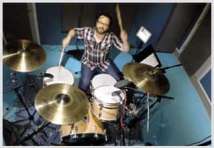
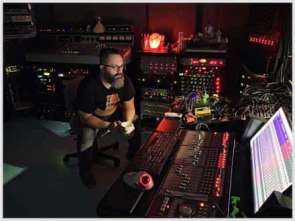
The Drums
Chris plays Ludwig drums. Chris uses one of the four kits described here when recording your online drum tracks. Clients selecting the Custom Master session package have the option of choosing the drum shells Chris uses for their project.
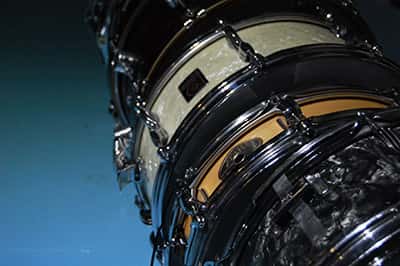
Snare Drum Collection
Chris has a ton of vintage and newer snares he chooses from on every drum recording session – thin shells, thick shells, shallow, deep, wooden, metal, the options go on and on. Chris’ collection includes brands like Ludwig, Gretsch, Tama, GMS, Premier, Allegra, and more. Between shell choice, tuning, muffling, and wire size, no sound is out of reach. If there’s a snare sound you have in mind, Chris can make it a reality.
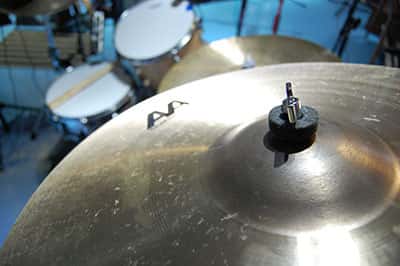
Cymbal Selection
Chris has a virtual slew of cymbals. Every tone from dark to light, earthy to watery, focused to washy are represented. Chris uses both new and old models from brands like Sabian, Zildjian, and Paiste because, of course, in the studio it’s about what works to get the right sound.
About Chris’ Past Clients and Brand Usage
The Brands
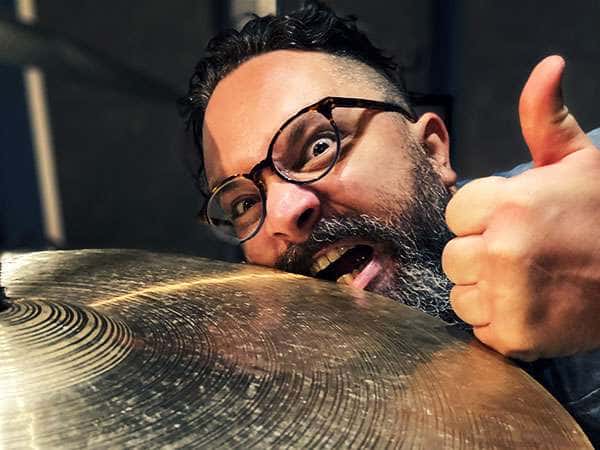 Chris is not really focused on chasing brand names, but he definitely has his favorite products — tools he uses everyday on remote drum sessions to get fantastic results. In case anyone cares to know, here is a list of the studio software and drum products Chris regularly uses.
Chris is not really focused on chasing brand names, but he definitely has his favorite products — tools he uses everyday on remote drum sessions to get fantastic results. In case anyone cares to know, here is a list of the studio software and drum products Chris regularly uses. 